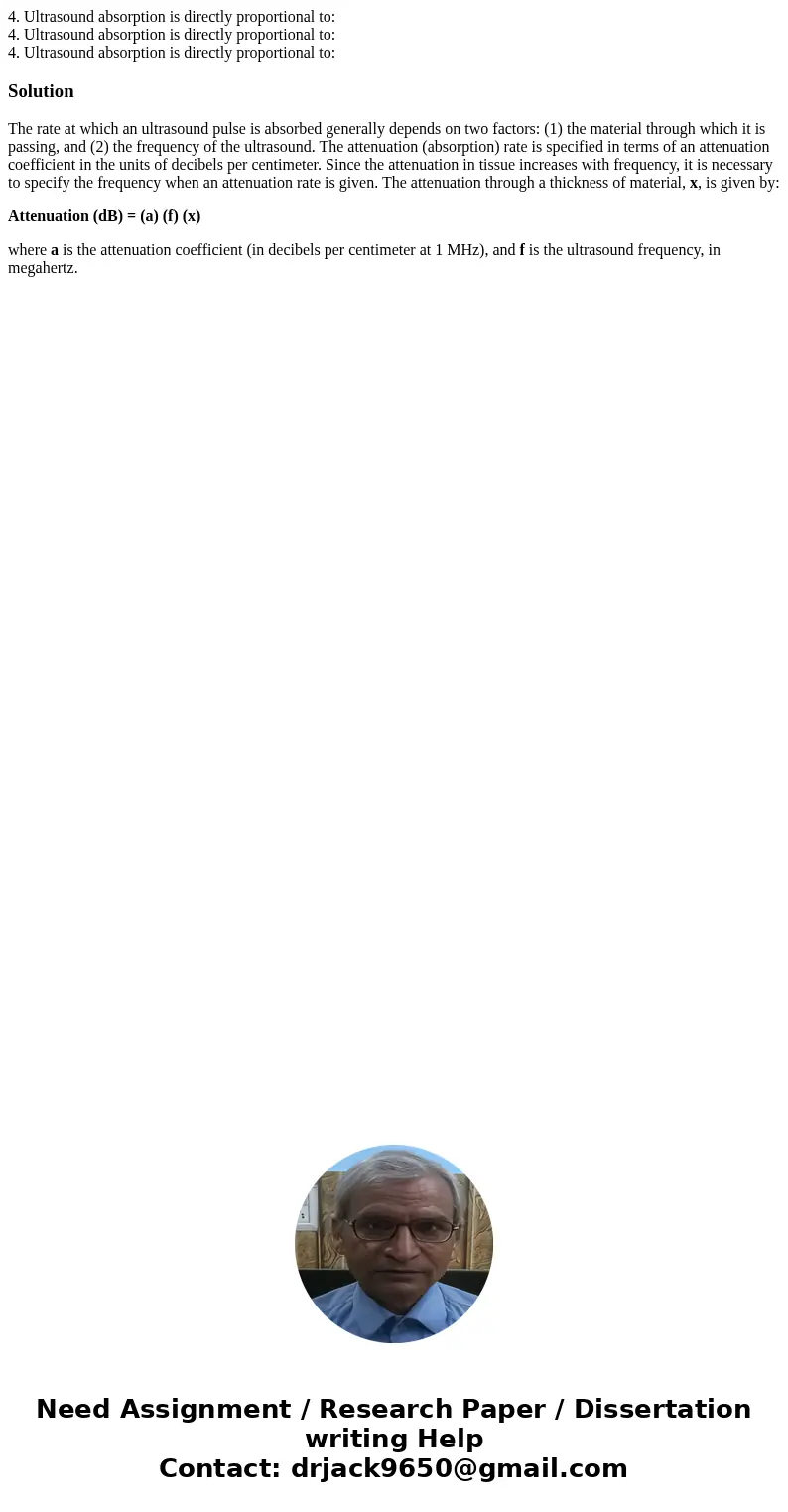4 Ultrasound absorption is directly proportional to 4 Ultras
4. Ultrasound absorption is directly proportional to:
4. Ultrasound absorption is directly proportional to:
4. Ultrasound absorption is directly proportional to:
Solution
The rate at which an ultrasound pulse is absorbed generally depends on two factors: (1) the material through which it is passing, and (2) the frequency of the ultrasound. The attenuation (absorption) rate is specified in terms of an attenuation coefficient in the units of decibels per centimeter. Since the attenuation in tissue increases with frequency, it is necessary to specify the frequency when an attenuation rate is given. The attenuation through a thickness of material, x, is given by:
Attenuation (dB) = (a) (f) (x)
where a is the attenuation coefficient (in decibels per centimeter at 1 MHz), and f is the ultrasound frequency, in megahertz.

 Homework Sourse
Homework Sourse